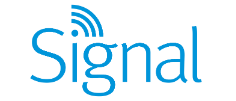The NFL were crunching stats before the buzz phrase “Big Data” even existed (think the film, Moneyball).
From installing RFID data sensors in players’ shoulder pads and NFL arenas, to using statistics to gauge the success of specific plays, the NFL are ahead of the game when it comes to implementing new technology. It doesn’t stop there. In the 2014 Pro Bowl, sensor-fitted footballs measured precisely how far they were thrown. The data being collected from these initiatives is staggering, and the influence it will have on both the game and the industry is still yet to be determined. Areas like instant replay and digital content – and how fans interact with it all – are part of the package.
So what can public safety learn from the NFL?
1. Hire the right people
In a bid to change with the times, the NFL appointed Michelle McKenna-Doyle as Chief Information Officer.
She says “If you look at how the game was played 10 years ago and how it’s played today, it’s evolved and changed … There’s a merger happening between the evolution of technology and the evolution of the game. It’s a very exciting time to be at the NFL.”
CIO is a position that has grown in importance and scope over the last few years. “Companies are hiring for the skills of a strategist, marketer and brainstormer as much as, if not more than, a tech wiz. And that’s reshaping the power dynamic, and salary structure, in executive suites across corporate America.” says the Washington Post.
2. Capture data for better tactical operations & decision-making
According to InformationWeek, “Officiating is a hot button issue for the NFL, and complaints have even crashed the league’s voicemail and email systems, McKenna-Doyle admits. The NFL has just voted in a new system that will instantly upload replays from all angles to league headquarters in New York, where central command will help on field officials make the right calls. The cloud technology required to process and transmit all this information in a timely way was either not available or not cost effective just a few years ago, she said.”
Capture and analyse data in a way that allows you to make ‘better calls’. Utilise data for actionable insights and incorporate these insights into day-to-day operations.
Public safety has its own set of sensors, such as aerial and body cameras, bringing in hoards of data every day … not to mention the ocean of Open Source Intelligence (OSINT) available online. Reference geolocated data for maximum situational awareness and understanding of what is happening in real-time.
3. Choose interoperability over rivalry
Put inter-departmental rivalries aside to share resources for the betterment of all.
All NFL teams, regardless of rivalries, have their data centralised into a statistical database that covers every game, every player, and every play in the history of professional football, complete with linked video footage (you can click on any stat and see the related play). Rather than focusing on boosting individual teams, the NFL is utilising this shared data and information to focus on what’s best for fans’ overall experience.
Public safety agencies can follow suit by sharing data between departments and agencies, as appropriate.
A congressional report released in 2015 suggested that public safety agencies were improving how they shared information in the wake of the Boston Marathon bombings. But it goes on to imply that stronger improvements need to be made in order to prevent further attacks.
“The threat to the homeland from abroad and from homegrown self-inspired radicals calls for agility, and strengthening the web of relationships that exists between state, local and federal partners to form a nationwide enterprise where state and locals collaborate and complement federal counterterrorism capacity,” the report says.
Signal encourages interoperability by allowing multiple users to interact via sharing flagged content and setting up alerts for one and other.













